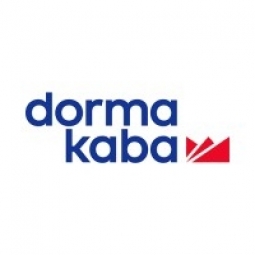Customer Company Size
Large Corporate
Region
- America
Country
- United States
Product
- TS93 System Door Closers
- 8900 Series Surface Door Closers
- 9000 Series Exit Devices
- LM Series Pivots
- EM Series Electromagnetic Door Holders
- PS Series
- D800 Series Deadbolts
- SKC (Serialized Key Control) system
Tech Stack
- LEED Silver Certification
- Passive solar heating
- Geothermal system
- Rainwater capture system
Implementation Scale
- Enterprise-wide Deployment
Impact Metrics
- Environmental Impact Reduction
- Cost Savings
Technology Category
- Infrastructure as a Service (IaaS) - Cloud Computing
Applicable Industries
- Education
Applicable Functions
- Facility Management
Use Cases
- Building Automation & Control
- Building Energy Management
Services
- System Integration
- Hardware Design & Engineering Services
About The Customer
The Eastern Band of the Cherokee Nation is a Native American tribe based in North Carolina. The tribe has a strong focus on education and has invested heavily in providing quality educational facilities for its K-12 students. The Cherokee Central School is a testament to this commitment. The school is a $108 million, 473,000 sq ft complex that serves as an all-encompassing campus for the tribe's students. The campus includes three schools, three gyms, an auditorium, a community center, a sports arena, a cafeteria, and an array of state-of-the-art athletic fields. The Cherokee Central School is one of the largest “green” schools east of the Mississippi, designed to achieve LEED Silver Certification and incorporate numerous earth-friendly features.
The Challenge
The Eastern Band of the Cherokee Nation had a dream to build a new $108 million, 473,000 sq ft complex for its K-12 students. The Cherokee Central School is now an all-encompassing campus with three schools, three gyms, an auditorium, community center, sports arena, cafeteria, and an array of state-of-the-art athletic fields. The Cherokee Central School is one of the largest “green” schools east of the Mississippi. The school was designed to achieve LEED Silver Certification, which meant “thinking green” from the project’s start to its finish. It began with determining how the structure would lie on the land and respect its natural surroundings—and many other energy-conscious construction decisions came after that. The buildings have numerous earth-friendly features including passive solar heating, day lighting, and a geothermal system. To conserve water, a system has been established to capture rainwater and add it to the water supply used to flush toilets and irrigate the grounds. 90% of construction waste from the project was recycled. To ensure the complex met its green objectives, the access solutions installed also needed to meet its sustainability requirements while providing reliable safety and security.
The Solution
A variety of DORMA architectural hardware products have been installed on internal and external doorways throughout the schools—contributing to energy conservation, while providing durability, strength, reliability, and security. TS93 System Door Closers have a unique cam and roller design and meet ADA barrier-free requirements. Also installed are DORMA’s Grade 1 narrow-projection 8900 Series Surface Door Closers, featuring full-range spring power adjustment, self-adjusting backcheck, a narrow projection full cover, and flat form style arm. The school chose DORMA’s 9000 Series Exit Devices for their heavy-duty chassis, superior durability, and smooth reduced projection touchbar assembly which minimizes catch hazards. LM Series Pivots and EM Series Electromagnetic Door Holders were selected for their long life and trouble-free operation for the school’s high-traffic openings. DORMA’s PS Series, made with heavy-duty circuitry for inductive loads and multi-door applications, ensure the school’s access solutions are powered up at all times. For added security, D800 Series Deadbolts and DORMA’s SKC (Serialized Key Control) system were installed. Key control is maintained by serializing every key blank, and authorized resellers and key cutters use a secure, web-based application to verify and track every single key.
Operational Impact
Quantitative Benefit

Case Study missing?
Start adding your own!
Register with your work email and create a new case study profile for your business.
Related Case Studies.

Case Study
Revolutionizing Medical Training in India: GSL Smart Lab and the LAP Mentor
The GSL SMART Lab, a collective effort of the GSL College of Medicine and the GSL College of Nursing and Health Science, was facing a challenge in providing superior training to healthcare professionals. As clinical medicine was becoming more focused on patient safety and quality of care, the need for medical simulation to bridge the educational gap between the classroom and the clinical environment was becoming increasingly apparent. Dr. Sandeep Ganni, the director of the GSL SMART Lab, envisioned a world-class surgical and medical training center where physicians and healthcare professionals could learn skills through simulation training. He was looking for different simulators for different specialties to provide both basic and advanced simulation training. For laparoscopic surgery, he was interested in a high fidelity simulator that could provide basic surgical and suturing skills training for international accreditation as well as specific hands-on training in complex laparoscopic procedures for practicing physicians in India.

Case Study
IoT platform Enables Safety Solutions for U.S. School Districts
Designed to alert drivers when schoolchildren are present, especially in low-visibility conditions, school-zone flasher signals are typically updated manually at each school. The switching is based on the school calendar and manually changed when an unexpected early dismissal occurs, as in the case of a weather-event altering the normal schedule. The process to reprogram the flashers requires a significant effort by school district personnel to implement due to the large number of warning flashers installed across an entire school district.

Case Study
Implementing Robotic Surgery Training Simulator for Enhanced Surgical Proficiency
Fundacio Puigvert, a leading European medical center specializing in Urology, Nephrology, and Andrology, faced a significant challenge in training its surgical residents. The institution recognized the need for a more standardized and comprehensive training curriculum, particularly in the area of robotic surgery. The challenge was underscored by two independent studies showing that less than 5% of residents in Italian and German residency programs could perform major or complex procedures by the end of their residency. The institution sought to establish a virtual reality simulation lab that would include endourological, laparoscopic, and robotic platforms. However, they needed a simulator that could replicate both the hardware and software of the robotic Da Vinci console used in the operating room, without being connected to the actual physical console. They also required a system that could provide both basic and advanced simulation training, and a metrics system to assess the proficiency of the trainees before they performed surgical procedures in the operating theater.

Case Study
Edinburgh Napier University streamlines long-distance learning with Cisco WebEX
• Geographically dispersed campus made in-person meetings costly and inconvenient.• Distance-learning programs in Malaysia, India, and China required dependable, user-friendly online tools to maximize interaction in collaborative workspaces.• Virtual learning environment required a separate sign-in process, resulting in a significant administrative burden for IT staff and limited adoption of collaboration technology.

Case Study
8x increased productivity with VKS
Before VKS, a teacher would spend a lot of time showing a group of 22 students how to build a set of stairs within a semester of 120 hours. Along with not leaving the teacher much time to provide one-on-one support for each student to properly learn carpentry, it also left a considerable amount of room for error. Key information would be misinterpreted or lost as the class was taught in the typical show-and-tell way.

Case Study
Scalable IoT Empowering GreenFlex's Sustainable Growth
GreenFlex, a company that supports sustainable development, decarbonization, and energy efficiency, faced several challenges in its quest to expand its business. The company needed to deploy a robust and sustainable IoT technology to support its growth. It was crucial for them to monitor and control devices at customer sites in a safe and reliable manner. They also needed to integrate devices across a range of communication protocols and gather and act on data to meet efficiency targets. GreenFlex had previously built IoT capabilities into its digital platform, GreenFlexIQ, to monitor and manage customer sites remotely. However, they soon realized that they needed a new platform to support their ambitions. They needed a platform that could scale to connect more devices for production management and make it easier for the operations team to manage devices in the field.







